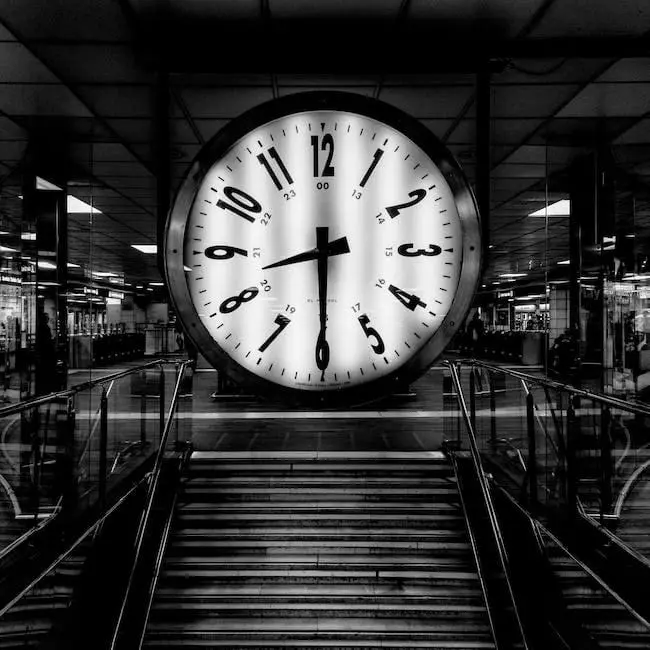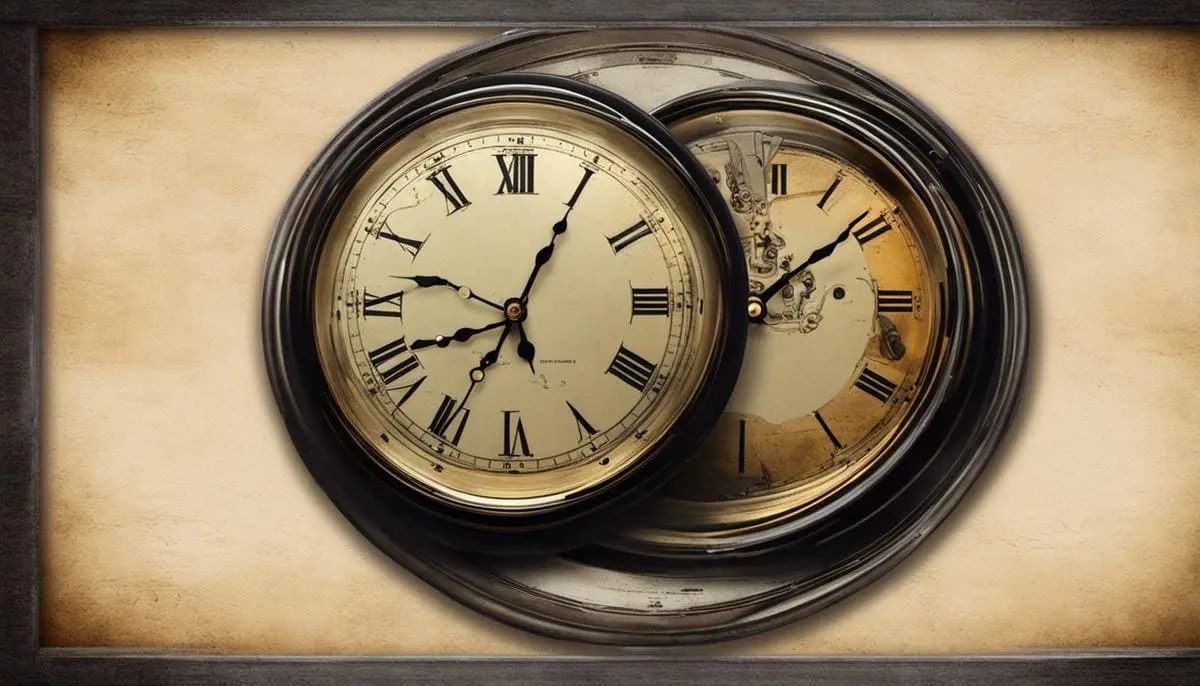In our daily lives, most of us are familiar with the 12-hour clock, repeatedly seguing through two periods of twelve hours marked by ‘AM’ and ‘PM’. We plan our day by these markers, scheduling meetings, meals, and activities within this cyclical timeframe. However, there is another system of marking time, called military time or the 24-hour clock, which is far more prevalent than we may realize. By delving deep into the mechanics of military time – its basics, differentiation from the 12-hour clock, reading and conversion, along with its utilitarian applications and advantages – we can understand why it is preferred in vital industries such as aviation, healthcare, and emergency services.
Understanding Military Time
Defining Military Time
Military time, or 24-hour time, is a method of telling time that eliminates the need for a.m. and p.m. designations. This system is commonly used by the military, emergency services, and many other organizations worldwide because of its efficiency and accuracy. Instead of two sets of 1-12, as is standard in a 12-hour clock, the 24-hour clock runs from 0-23 hours. For instance, the time 1:00 p.m. on a 12-hour clock would read as 1300 in military time.
How to Read and Convert Military Time
To interpret military time, you need a basic understanding of the 24-hour format. The hours from 1:00 to 11:59 a.m. are the same in military time, only without the a.m. suffix. However, times from 1:00 -11:59 p.m., you add 12 to the given time. For instance, 2:00 p.m. becomes 1400 in military time. Midnight, or 12:00 a.m., is signified as 0000 or sometimes as 2400.
Converting military time to a standard 12-hour clock also requires some basic subtraction. If the military time is 1300 and beyond, subtract 1200 from this time, and the result gives you the equivalent in traditional time.
For example, the military time 1700 would translate to 5:00 p.m. in a 12-hour format (1700-1200=500). However, 0000 or 2400 in military time equates to 12:00 a.m. in standard time.
Understanding the Benefits of Military Time
Many organizations opt for military time due to its efficiency and clarity. By using a 24-hour scale, there’s no room for confusion between a.m. and p.m. times, which can be significant in environments where precision is essential, such as in the military, firefighting services, or hospitals.
Additionally, military time enables accurate, quick, and universal time reporting. The 24-hour format is internationally followed and recognized, making it simpler for global communication and coordination. In the digital age, where global communication is the norm, a unified time measurement system is of prime importance.
Differences Between the 24-hour and 12-hour Formats
The principal difference between the 12-hour and 24-hour formats lies in their representations of the day. While the 12-hour clock divides the day into two periods – a.m. (before midday) and p.m. (after midday), each from 1 to 12, the 24-hour format treats the day as a single period that runs from 0000 to 2400.
This aspect of military time enhances efficiency and precision and reduces the likelihood of misunderstandings regarding the time of day.
Why Military Prefers the 24-hour Clock
Utilization of the 24-hour clock is standard in military procedures due to its capacity for unambiguous and concise communication. The high-stakes nature of military operations necessitates such clarity to prevent fatal misunderstandings that could occur by confusing a.m. and p.m. Understandably, the 24-hour clock satisfactorily circumvents this potential issue.
Therefore, the application of military time has far-reaching benefits; its effectiveness extends beyond the military to organizations and individuals that demand precise and error-free timekeeping. This is particularly beneficial for entities operating across diverse global time zones.

Practical Applications of Military Time
Why Aviation Prefers the Use of Military Time
Just like in the military setting, the aviation industry also prioritizes the use of the 24-hour clock – otherwise known as military time. This eradicates any possible confusion that may arise from the interpretation of the traditional 12-hour clock, a misunderstanding that could potentially lead to devastating outcomes such as flight scheduling errors and air traffic management mishaps. Consequently, organizations such as the International Civil Aviation Organization (ICAO) heartily advocate for the 24-hour clock to prevent such issues. By adopting a consistent time format, airlines worldwide can sidestep discrepancies caused by varying time zones and daylight saving adjustments, thereby guaranteeing a seamless operation of international aviation traffic.
Healthcare Professionals and Military Time
In healthcare, the precise documentation of time is vital. Military time has proven to be beneficial in this sector as it eliminates any ambiguity related to AM and PM. For example, proper administration of medication often hinges on the correct timing, and using a 24-hour clock reduces the risk of dosing errors due to misunderstandings of time. The accuracy provided by military time also supports precise documentation of patient assessments or procedures, which occur round the clock in healthcare facilities.
Military Time in Emergency Services
Emergency services like police, fire, and EMS also heavily rely on the 24-hour clock system. In high-pressure situations where every second matters, the exactness of military time can prevent misunderstandings that could potentially lead to life-threatening delays or errors during emergency operations. Again, this is a field where AM or PM confusion simply isn’t an option. Also, military time’s round-the-clock nature aligns better with the 24/7 functioning of these services.
Application of Military Time in Computing and Technology
Military time is utilized in computing and technology sectors due to its simplicity and compatibility with systems programming. Notably, the 24-hour time format does not require AM or PM designations, making it easier and more logical to use in computing operations. A classic example of this is the universally-adopted ISO 8601 date and time standard used in software development which uses a 24-hour clock.
Military Time in Other Industries
Several other professions also find value in using military time. For instance, public transportation schedules often use this format to eliminate ambiguity for travelers, while logistics companies use it to track and schedule deliveries accurately. Even the hospitality industry uses military time in their operations – chefs, for example, will use it to ensure accurate cooking times.
In essence, the adoption of military time in various sectors is due largely to its inherent precision. This 24-hour time format effectively eliminates any potential confusion that might stem from AM and PM designations. Given that many operations run on a 24-hour cycle, it has proven to be a reliable and practical way to ensure accurate timekeeping.

Advantages of Adopting Military Time
Dispelling AM/PM Confusion
One of the most noticeable benefits of utilizing military time, otherwise known as the 24-hour clock, is that it completely dispels any confusion that might arise from ‘AM’ and ‘PM’ designations. In the standard 12-hour clock system, the time sequence restarts from 12:00 after hitting 1:00. This can often lead to misunderstandings especially when scheduling activities that cross over from AM to PM, and vice versa. For example, a meeting slated for 7:00 could easily be mistaken for either morning or evening. However, this issue is effectively resolved with military time, as hours steadily progress from 00:00 (midnight) to 24:00 (heading into the next day’s midnight), offering a crystal clear distinction between day and night sessions.
Streamlined International Communication
For those communicating with people in different time zones or countries, military time offers significant benefits. It is the standard time format used in many countries around the world and in international sectors such as aviation, computing, logistics, and the military. When using military time, the risk of misinterpreting time due to differences in 12-hour clock usage is minimized. For instance, no confusion arises even if one country labels midnight as 12:00 AM and another as 0:00.
Enhanced Accuracy in Scheduling and Planning
By using military time, businesses and individuals can enjoy increased accuracy and efficiency when scheduling tasks and appointments. This is particularly helpful in industries that operate around the clock, such as healthcare, emergency services, and transportation. Service providers are less likely to make mistakes regarding shift changes, medication timings, or departure schedules since there is no ambiguity with military time.
Encourages Promptness and Discipline
The use of the military time system can also encourage promptness and discipline. Those who use this format often find that it encourages a more alert and organized approach to time management. With no room for error or misunderstanding, commitments and tasks are more likely to start and end as planned.
Ease of Conversion
Another significant benefit of military time is the simplicity of conversion. When converting from a 12-hour clock to a 24-hour clock, one simply adds or subtracts 12, depending on the time of day. That ensures that even new users can adapt quickly and integrates this system into their daily lives.
Improved Safety and Compliance
In certain professions, particularly in healthcare, using military time can also enhance patient safety. It eliminates the risk of errors due to AM/PM confusion, which can possibly lead to significant issues in medication administration or surgery scheduling. Because of its accuracy and efficiency, many industries, including the military, aviation, and healthcare, have regulations mandating the use of military time. This ensures everyone is on the same page, significantly reducing the risk of misunderstanding and its potential consequences.

Framing our view of time within the constraints of military time might seem unusual at first, but it comes with a myriad of benefits that profoundly improve efficiency and accuracy in both professional and personal spheres. The 24-hour clock eliminates the common AM/PM confusion, simplifies international communication, and offers a more straightforward approach to scheduling and planning. By embracing military time, not only do we align ourselves with critical global sectors, but we gain a more systematic and definitive approach to organizing our daily lives. Seeing time in the clear-cut format of military time could lead to enhanced productivity and a newfound appreciation for each valuable hour of our day.

